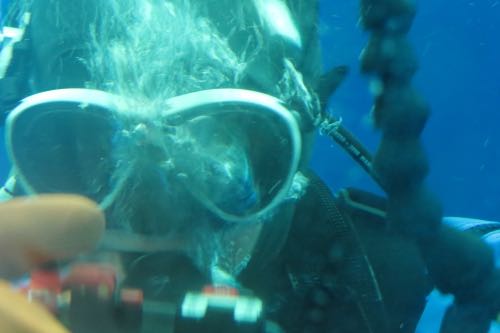 My friend, Kirsten and I underwater. Am I diving? Find out below!
My friend, Kirsten and I underwater. Am I diving? Find out below!
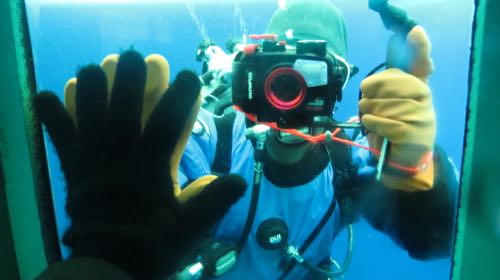 Smile! Kirsten and I take pics of each other.
Smile! Kirsten and I take pics of each other.
New experiences claimed my day. Starting bright and early at 7am, there was a fire drill for our residence hall. Yes, we have to practice those just like everyone else. Thank goodness the temp wasn't brutally cold as I left my room in pj pants and my big red coat. Thankfully, I had left my hiking boots next to my bed so I could quickly get them on. My research colleague did not fair as well coming out in open toe Birks! Yikes, that must have been cold!
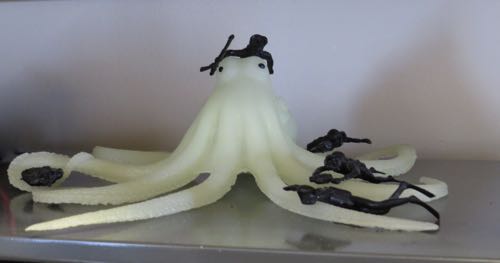 Giant Squid display in the dive locker! Clearly someone has a sense of humor here!
Giant Squid display in the dive locker! Clearly someone has a sense of humor here!
In the lab I got to run the power saw and take fun pics of thin sections of ice I was able to cut. More to come on that later in the month. The truly exciting part of my day entailed heading to the dive locker and serving as a dive tender and getting some time in the observation tube. I will do another journal on the observation tube tomorrow! Today's focus is on the diving.
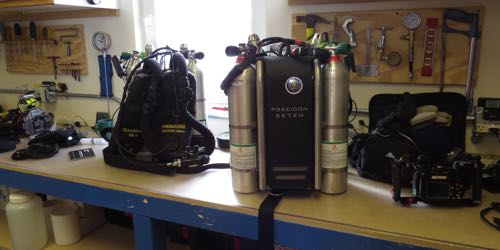 Dive equipment being tested… rebreathers, not designed for the cold conditions in Antarctica but in tests, these seemed to work okay.
Dive equipment being tested… rebreathers, not designed for the cold conditions in Antarctica but in tests, these seemed to work okay.
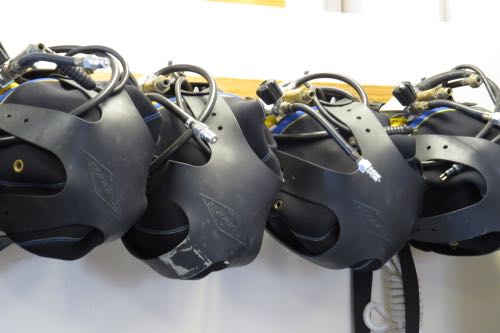 Head gear for diving.
Head gear for diving.
A big thanks to Rob Robbins who allowed me to come along as a dive tender despite not being "signed" up to do so. Rob is a master diver and married to a fabulous woman, Robbie, that I was lucky enough to meet in Alaska during my training. Rob has made well over 1500 dives into the icy Antarctic waters. He is super friendly and encouraged me from my first week to come down and check out the diving!
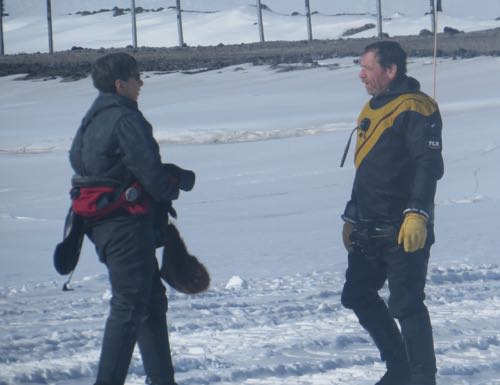 One dive was finishing and another about to get started. Here, Rob Robbins, in yellow and black suit, heads back to the dive locker as Brenda Konar heads to the dive hut.
One dive was finishing and another about to get started. Here, Rob Robbins, in yellow and black suit, heads back to the dive locker as Brenda Konar heads to the dive hut.
Assisting on the dive today is another legend in Antarctic diving, Brenda Konar. Her dive tender is another great, John Heine, a diver for over 45 years – which is longer than I have been alive! The other divers for today are newcomers to Antarctica, like myself. Both currently live in Hawaii and are artists. Michelle and Kirsten have become wonderful new friends and allowed me to assist them as their secondary dive tender. They actually had a bonafide dive tender, Jess, another Wisconsinite from Mequon! Jess serves on the janitorial staff here and turns out, she had Mr. Heibler as a science teacher who I know as a result of APES, crazy small world!
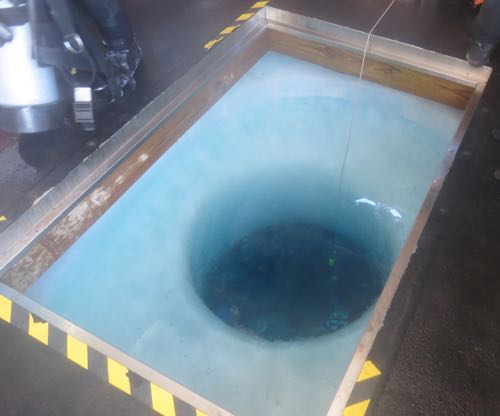 A close look at the diving hole! Must be kept warm or it will freeze up overnight!
A close look at the diving hole! Must be kept warm or it will freeze up overnight!
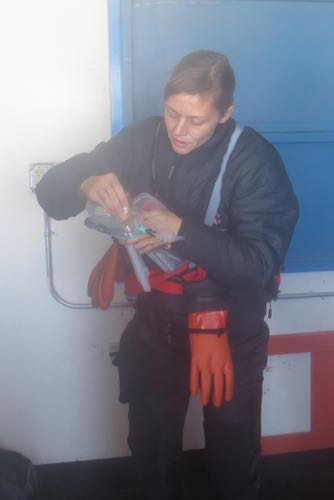 Michelle, a native Wisconsinite, getting ready for her dive. She is part of the artists and writers group visiting Antarctica.
Michelle, a native Wisconsinite, getting ready for her dive. She is part of the artists and writers group visiting Antarctica.
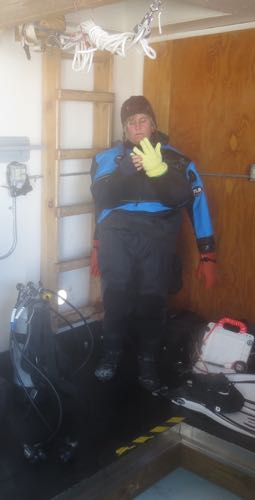 Another new friend, Kirsten, is also suiting up for the dive. She is also an artist.
Another new friend, Kirsten, is also suiting up for the dive. She is also an artist.
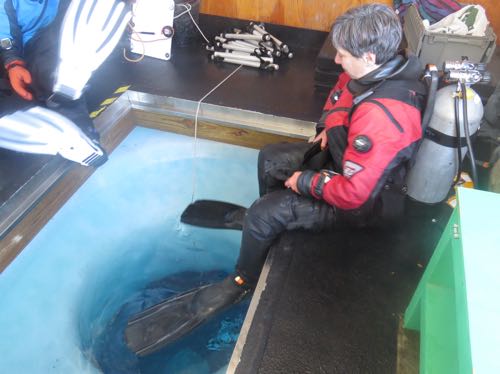 The last of the threesome, Brenda Konar is ready to go in. She is a master diver with over 30 years of experience and is there to assist Michelle and Kirsten.
The last of the threesome, Brenda Konar is ready to go in. She is a master diver with over 30 years of experience and is there to assist Michelle and Kirsten.
The pics below will speak for themselves. I have a lot to show. It was so fun! The water was crystal clear and I got to see some sweet invertebrates. I am not a diver, in fact, I haven't even snorkeled, and after watching the ladies go through their routine just to get into the water, I am thinking it may never be in my wheelhouse! I envy their ability to see and get close to the undersea life, but I am pretty content to see it from the observation tube!
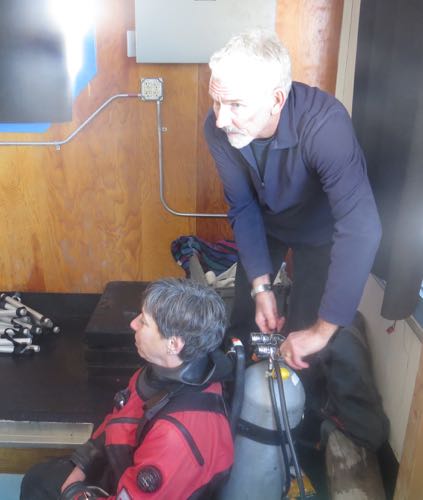 John Heine, another legend of diving with 45 years of diving experience, is serving as one of the dive tenders and turning on some O2.
John Heine, another legend of diving with 45 years of diving experience, is serving as one of the dive tenders and turning on some O2.
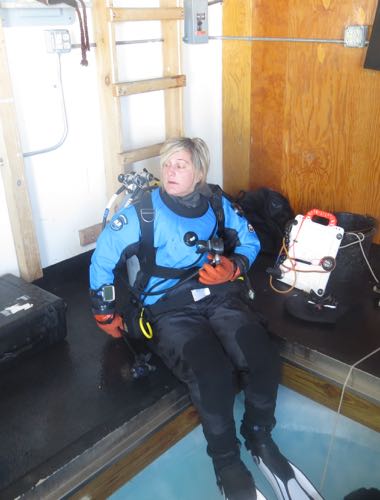 Kirsten is almost ready to get in the -1.7˚ C water. Brrrrr.
Kirsten is almost ready to get in the -1.7˚ C water. Brrrrr.
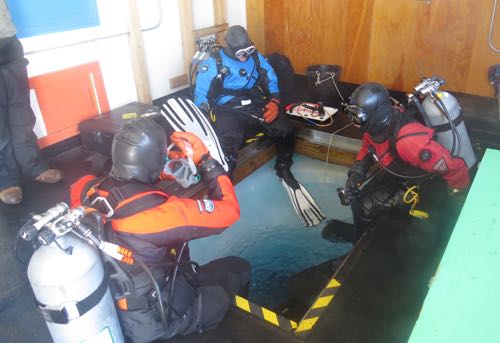 All three women are suited up and ready to dive in!
All three women are suited up and ready to dive in!
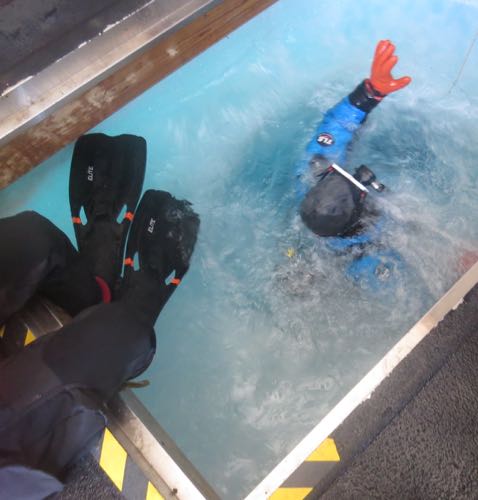 In goes Kirsten!
In goes Kirsten!
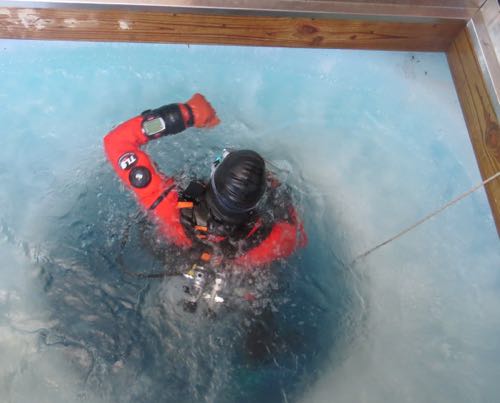 There goes Michelle!
There goes Michelle!
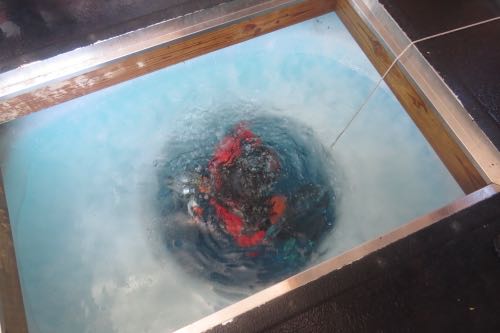 Michelle will soon be under the ice.
Michelle will soon be under the ice.
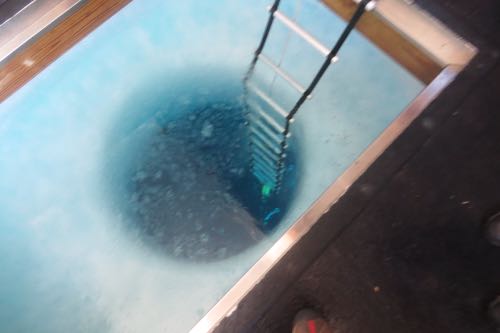 After the divers are safely in the water, a ladder is dropped in case someone needs to get out fast.
After the divers are safely in the water, a ladder is dropped in case someone needs to get out fast.
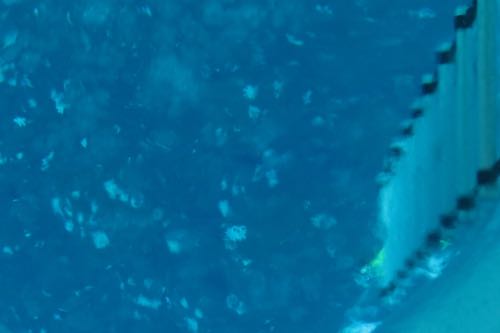 Water is clear and beautiful.
Water is clear and beautiful.
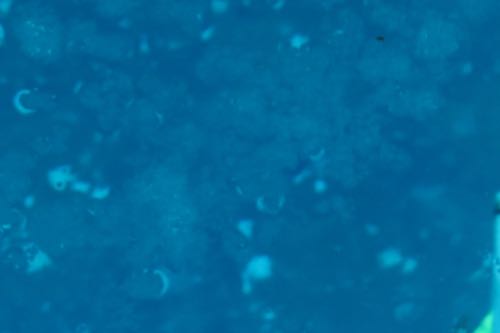 Looking through the dive hole you can make out some sea animals.
Looking through the dive hole you can make out some sea animals.
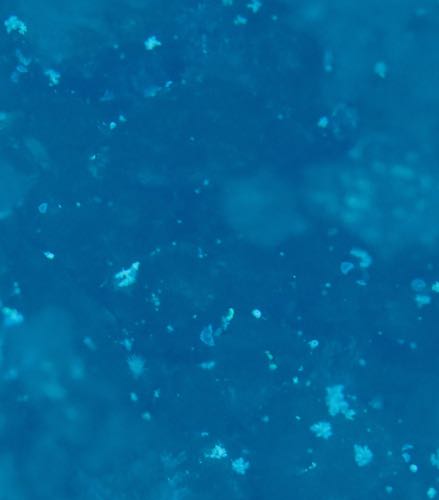 Sea anemones and coral-like critters as well as sponges are visible.
Sea anemones and coral-like critters as well as sponges are visible.
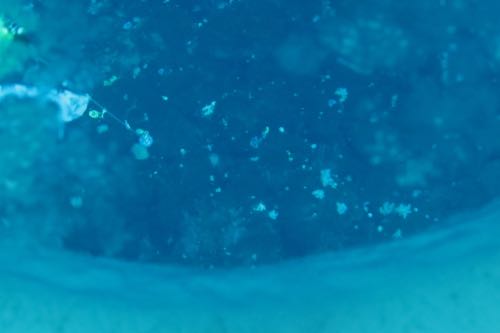 How far down is it to the bottom? If memory serves correctly, I think I heard 40 ft or about 13 meters.
How far down is it to the bottom? If memory serves correctly, I think I heard 40 ft or about 13 meters.
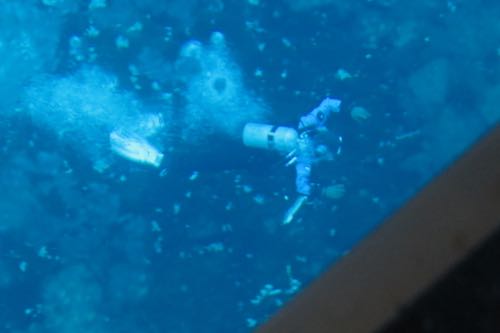 One of the divers can be seen through the hole.
One of the divers can be seen through the hole.
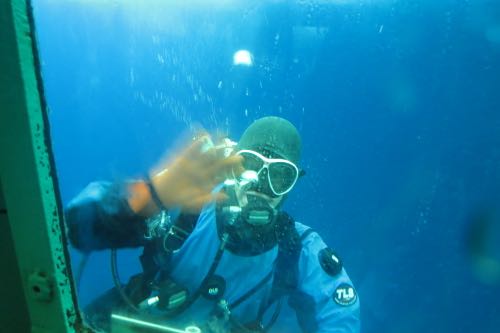 No diving for me. I am in the observation tube and Kirsten is waving. The Ob tube will be another journal topic up and coming!
No diving for me. I am in the observation tube and Kirsten is waving. The Ob tube will be another journal topic up and coming!
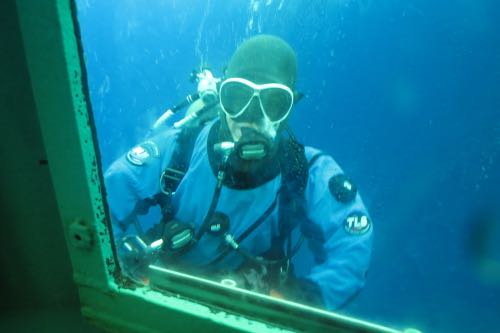 Another view of Kirsten from the ob tube!
Another view of Kirsten from the ob tube!
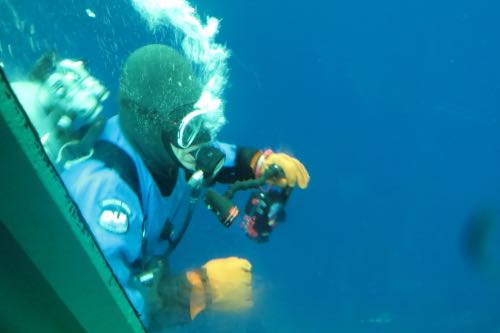 A side view of Kirsten and her camera from the ob tube.
A side view of Kirsten and her camera from the ob tube.
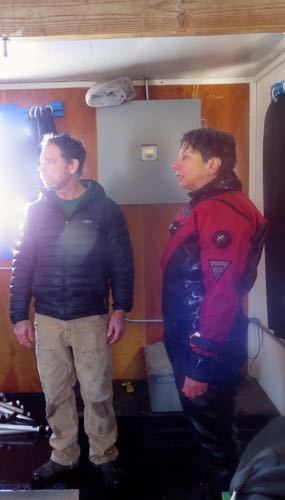 Rob Robbins, out of his wet suit, has come back to pick up equipment from the gals' dive. Brenda is already up and out!
Rob Robbins, out of his wet suit, has come back to pick up equipment from the gals' dive. Brenda is already up and out!
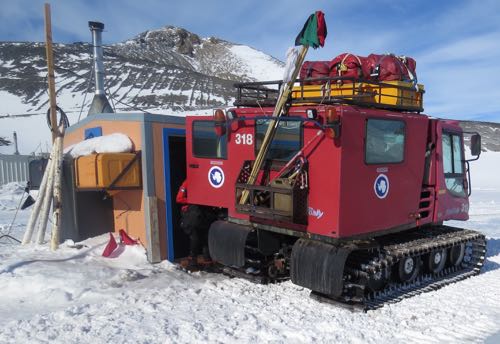 Dive Hut and vehicle ready to take equipment back to the dive locker.
Dive Hut and vehicle ready to take equipment back to the dive locker.
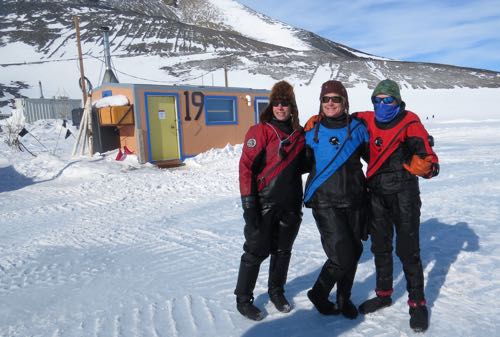 Dive is complete. The three ladies are out of the water and out on the ice. Get your penguin suits on, the ice is slippery! Dive hut 19 is in the background.
Dive is complete. The three ladies are out of the water and out on the ice. Get your penguin suits on, the ice is slippery! Dive hut 19 is in the background.
Flat Lorax would probably agree with me on this! Today's cards are from Gabby in first grade and Kailee, a former APES student!
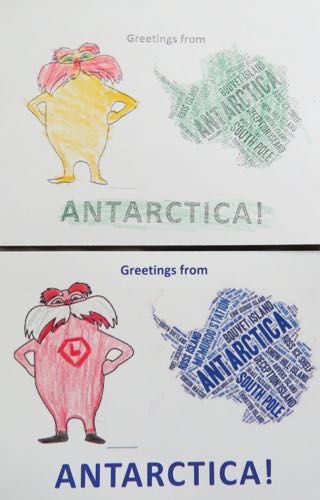 Flat Lorax postcards for Gabby in 1st grade and Kailee a former APES student!
Flat Lorax postcards for Gabby in 1st grade and Kailee a former APES student!

Comments
Add new comment